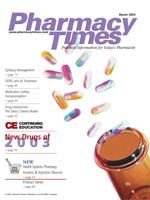Publication
Article
Pharmacy Times
MEDICARE PRESCRIPTION DRUG, IMPROVEMENT AND MODERNIZATION ACT OF 2003 (PUBLIC LAW 108-173)
Author(s):
In 1965, the Medicare program was introduced, andtoday it covers 41 million Americans. It serves all eligiblebeneficiaries without regard to income or medical history. Itplays a central role in the US health care system.
Last year the first major addition to Medicare was passedwith the enactment of the Medicare Prescription Drug,Improvement and Modernization Act. Although controversial,the new provisions could have a major impact on pharmacypractice. The major provisions of the law go into effecton January 1, 2006, with the availability of Part D, a prescriptiondrug benefit, but the transition program becomeseffective in the spring of 2004 with the availability of a drugdiscount card and a transitional assistance program.
According to the New York Times (February 6, 2004), 106health industry companies have applied to sponsor a card.Both the National Association of Chain Drug Stores, incooperation with Express Scripts Inc, and the NationalCommunity Pharmacists Association, in cooperation withMemberHealth Inc and Computer Sciences Corp, are includedin this number.
The architects of the Medicare drug program are usingthe transitional program to offer beneficiaries discounts onprescription drugs with expected savings of 10% to 25%. Amajor concern to the community pharmacist is, where willthis discount come from, the pharmacist or the manufacturer,or both? Additionally, this program will provide $600per year that low-income beneficiaries can apply toward prescriptiondrug costs.
The coverage area for any card must be at least a state. Abeneficiary may have to choose between 30 or 40 differentcards. Can you imagine the potential for confusion? A beneficiaryis allowed only 1 card, so the decision is critical.
Community pharmacists may find themselves fielding alot of questions from patients on which card to choose. Yournational pharmacy organizations will be doing their best toeducate their members, and pharmacist employers will findthemselves also trying to educate their employees. PharmacyTimes will do its best to keep you informed too.
The next few months will be very exciting, as patientsare enrolled in this drug benefit. Will a future generation ofpharmacists be able to look back to 2004 and see that theMedicare Part D benefit was the beginning of growth andimprovement in pharmacy practice? I hope so.







